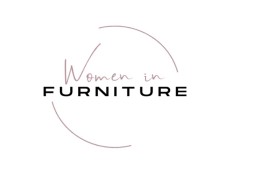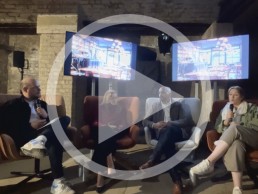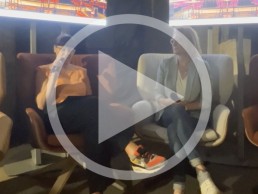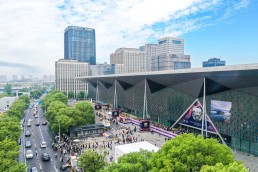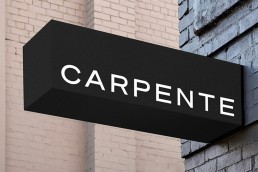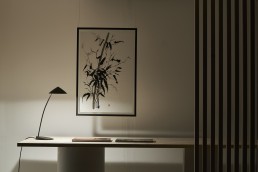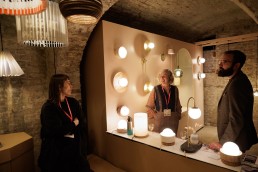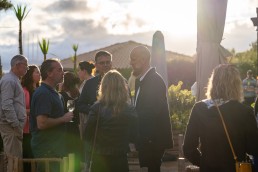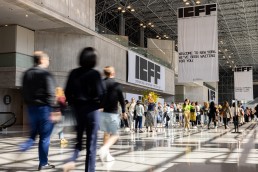Elevating Your Brand and Business Through Strategic Commercial Interior & Lighting Design at CDW
https://vimeo.com/953979153?share=copy
Our panel of design experts: Mara Miller, Industville; Sanjit Bahra, Design Plus; Inge Watrobski, Head of Design, Heartwood Collection Light, discusses how strategic commercial interior and lighting design can elevate a brand’s identity, customer loyalty, and in turn build business opportunities.
The future of hospitality design with Holly Hallam of DesignLSM at CDW
https://vimeo.com/953948988?share=copy
Interior designer Holly Hallam discusses what the future of hospitality design could look like; what will impact design choices; and how designers might need to adapt.
Discussion on 'Lighting and Wellness' with Jo Littlefair at CDW
https://vimeo.com/953983964?share=copy
Jo Littlefair of interior design studio Goddard Littlefair discusses the use of lighting when working on wellness interior design projects, referencing the studio’s work on the spa at Raffles London at The OWO.
In Conversation with... interior designers Staffan & Monique Tollgard at CDW
https://vimeo.com/954343703?share=copy
[d]arc media’s managing editor, Helen Ankers sits down with the design duo reflecting on their 20-year career history, how the industry has changed for designers in general, as well as what has changed for products and trends in lighting.
Lindsey Adelman launches oil lamp exhibition in NYC
(USA) - ‘A Realm of Light’ is a new collection of oil lamps by New York-based designer Lindsey Adelman, that was on view at TIWA Galley during New York’s Design Week last month.
The collection of 32 oil lamps on display consist of two-archetypes: brass-chain-suspended amber hand-blown glass bulbs which can hang solo or create multi-configurations or chandeliers; and sitting lamps blown in brown, black, clear, and gold glass made with close collaborator Nancy Callahan.
Lindsey Adelman, founder of Lindsey Adelman Studio, says: “This collection has allowed me to reflect on the building blocks of light, why I’m drawn to working with light, and why I'm a lighting designer. Firelight is my favourite kind of light. It is primal, raw, and constantly changing, and the space it illuminates is constantly changing too. It feels a bit radical as a lighting designer to just use fire, to completely sidestep or escape the rules of the cord and the plug and the UL listing. Sculpting with fire is completely different from designing for electricity: fire is magical and dangerous, beyond your control, and yet demanding of your complete attention.”
A departure from her large-scale studio projects, Adelman’s oil lamps are designed to induce a collective ritual experience by drawing inspiration from sacred ceremonies and collective rituals while exploring perceptions of time and space.
Adelman adds: “Oil lamps are the oldest lamp in existence, preceding electricity by over 6,000 years. Along with incense lamps in cathedrals, there’s this incredible history and mythology associated with their use in sacred rituals. I love that there is a power beyond the literal activity of what we can see–the idea of a collective of people dissolving into one energy, over a dinner party for instance. It’s a new type of ascension, a new mythology.”
Design Shanghai Returns in 2024
(China) - Asia’s largest international design festival enters its 11th edition, expecting to bring over 100,000 visitors to the Shanghai World Expo Exhibition and Convention Centre.
Taking place from 19 – 20 June, the event will attract leading international and Chinese manufacturers, design-led brands, global industry leaders, architects, collectors, interiors designers and design enthusiasts. The event will showcase curated exhibitors, features, and a talks programme.
New features to the show in 2024 will include hall four for “New Materials and Applications”, showcasing innovative design approaches, which will complement the existing three halls on lighting and furniture design. Also, Sustainable Design Summit will be hosted for the first time in the Shanghai Exhibition and Convention Centre in tandem with Design Shanghai. Showcasing 60 events and talks from 60 speakers, the summit will provide an international platform for visitors to explore the future of responsible design.
Zhuo Tan, Event Director of Design Shanghai says: “Design Shanghai has gone from strength to strength over the last ten years. We have persuaded many overseas brands to join this emerging market In China, and help Chinese brands communicate and export to the outside world and strive to change everyone’s perception of Chinese design. In the next 10 years, we will continue to do this, and at the same time we will use more energy to convince the overseas media and overseas markets. I believe in Chinese design and Chinese creativity. I look forward to witnessing more innovations and break throughs by Design Shanghai in June this Year.”
Carpente reveals major rebrand
(UK) - Notting Hill-based architecture and interior design firm Carpente announced a major rebranding project including website and social media channels, by Aboud + Aboud.
Previously named Caps Architects, Carpente’s new identity celebrates founder and principal, Christophe Carpente – using his name in an all-cap's modern sans typeface – representing the firm at large. A new double C logo reflects Carpente’s initials while alluding to designing in three dimensions.
Carpente also launched its website, featuring a stacking architecture that visitors can explore by clicking on project titles to expand and minimise windows to peruse various commercial and residential projects - which it is renowned for, such as Cartier, De Bees, Dunhill, Pandora, Swaroski, and Vertu.
Christophe Carpente, Founder of Carpente, says: “We’ve been so focused on producing great work of our own that our website has been slightly neglected. So, we’re thrilled to be able to launch our new identity and site designed by ABOUD + ABOUD. Working with Alan and his team to create a new expression of who we are as an architecture studio has been a pleasure. I think our work now has the platform it deserves to be showcased properly online. We look forward to adding more content as regularly as we can.”
Alan Aboud Designer and Founder of Aboud + Aboud, adds: “We began collaborating with Christophe and his team in 2023. We’ve been hugely inspired by the scope of the work they do and by their exceptional attention to detail. They are a truly holistic architectural studio in that they consider every conceivable detail of a space, from structure, lighting, and spatial flow - right down to furniture, fixtures, cabinetry, and extensive art curation. Their network of artisanal collaborators is remarkable. It made absolute sense to put Christophe and his name front and centre of the new identity. Our work merely holds a mirror to the remarkable collected output of the practice - which is now celebrated on their new website.”
Qufor - Duoli
Duoli is a table lamp custom developed within the project created by Qufor the lighting of the Capitol hotel in Nervi, Italy, project by Parisotto + Formenton Architetti. Inspired by the iconic Asian rice straw cone headdress: the essential shape is nothing more than what is needed and the slender stem recalls the rushes in the wind inits slenderness.
Light and simple, the lamp projects a soft, focused light perfect for reading and working. Domestic, but perfect in a hospitality context, it is an object of timeless taste. Duoli is characterised by a lampshade and a base entirely in aluminium, joined by a thin partially curved stem.
It is available in the version with asymmetric support base and in the version with clamp for fixing to the worktop. Made in the Black, White, Sage Green, Fierce Green, Night Blue, Ancient Brick and Silver Gray finishes, Duoli has a lamp shade with a diameter of 160mm and is 435mm high in the table model and 410 mm in the one with clamp.
Clerkenwell Design Week Highlights
Now into its 13th year, Clerkenwell Design Week boasted a 20% increase in registrations, solidifying its position as one of Europe's leading design festivals. Despite the wet weather and grey skies, thousands from the design community flocked to the EC1 neighbourhood to uncover the latest innovations and trends in design. Clerkenwell has become a key destination for the lighting industry, where brands meet designers amidst the highest concentration of architectural firms in the area. It's no surprise that notable brands like J.Adams&Co, Bert Frank, and Zero have established showrooms here. At [d]arc media, we anticipate this event each year, from hosting our lighting design talks to exploring showrooms and discovering new products. Below, our online Editor, Ellie Walton, shares her curated highlights from this year's show.
Bert Frank’s elevated range
With 160 showrooms in the area, Clerkenwell is a specifier's dream. Thankfully, our focus was on the lighting brands—the most glamorous of all design sectors. The day began perfectly with a breakfast invitation to Bert Frank’s showroom on Farringdon Road, where a stunning brunch spread awaited us. Above the table hung a beautiful octagonal chandelier finished in antique brass, casting a soft, warm glow. This chandelier is a reimagined version of Bert Frank’s Colt Pendant Triple light, featuring a textured black spine holding three cast brass grills with slotted opal diffusers.
Bert Frank’s approach to showroom launches this year embraced a philosophy of "in with the old, out with the new." The showcased products were from existing collections but with slight modifications, such as new sizes for the Bide alabaster wall lamps, allowing for various configurations and bespoke options, and added details such as decorative leather on the Rinato stands. These updates came from the company's collaboration with creative director Silvia Doria, who has infused the existing ranges to give a feminine edge.
Zero Lighting debut pieces
The Swedish company Zero debuted a new wall lamp named Sprinkle, designed for its delicate diffusion of light. This metal wall lamp features three-layered discs available in bespoke colours; the display model was presented in orange tone, casting a natural, warm glow onto the wall—hence the name "Sprinkle."
Also showcased in the showroom was the Curve Cluster ceiling lighting, designed by Front Studio. The design features three sprouting handles resembling tree branches. Two styles were displayed: one with a copper finish and glass bauble shade, and the other entirely metal in a dark forest green finish. Sebastian Gill, Export manager and Lightering Designer, at Zero explained that multiple lights can be purchased and configured together to create large, bespoke centrepieces. The designers at Front, a Swedish company, emphasise sustainability, ensuring that the Curve Cluster is durable and practical enough to stand the test of time.
Fritz Fryer debut pieces
It would be hard to go to Clerkenwell and not drop by the Fritz Fryer showroom with its glorious glowing store front beckoning passes by to come in. It was a delight seeing the showroom in its glory and plenty of exclusive products on show for the CDW visitors. The standout piece had to be the Parlour Linear Pendant light made in collaboration with Inglias Hall Kitchen makers. The pendant’s industrial style stood out among the glittery glass pendants, slender shape that emits a surprisingly soft and ambient light. Engineered completely from brass with a slim piece running underneath the light to creating the right amount of bright and warm glow.
Lighting Exhibition product highlights
Clerkenwell’s House of Detention truly glowed in a warm beacon of light over the three-day festival. Showcasing an array of stunning brands, including some good friends of the magazine. One of the familiar faces that immediately caught my eye was Nordlux, situated situated at the entrance of the Victorian prison, drawing in groups of visitors to look at its Aludra garden lights. In the decorative lighting section, sleek and contemporary outdoor lighting is hard to pull off, making Nordlux’s collection stand out. The Aludra lights create beautiful light and shadow effects from its glass fluted structure, explaining why the product garnered so much attention.
Another standout at the show was Spark and Bell’s innovative Onyx wall and pendant lights. Responsibly made and purpose-driven, these beautiful fixtures are crafted from surplus CD cases rescued from landfill and transformed into a lustrous, marble-like material in the company’s Brighton workshop. Founder and designer Emer Gillespie was inspired by her neighbour, a local record dealer, who provided her with unused and broken CDs. This creative reuse not only showcases stunning design but also emphasises what responsible design and local craftsmanship can achieve.
Elsewhere, Fabbian’s cell caught my eye with sparkling light emerging from its doorway. The reflective light came from the Amulent Pendant, made of clear crystal with hammered edges and a painted brushed metal in gold, rose gold and anthracite. Designed by Bernhardt & Vella who spent time studying the unique effects that LED light produces when penetrating a polished cast crystal plate to create this unique downlight and twinkling affect.
Light and Sound installation
Tucked away at the back of the House of Detention, visitors were treated to a captivating light-sound installation from London-based artist Ben Cullen Williams, titled 'Grid System'. This piece delves into the impact of grids in physical spaces, immersing viewers in evolving light patterns that map grids onto them, making them part of the installation. The work resonated deeply with its environment, a historical site known for entrapment, as two rotating scanning lights shone through mesh metal, casting fragmented shadows reminiscent of lighthouses and searchlights. Collaborating with musician Harrison Cargill, the installation incorporated soundscapes recorded across the UK, manipulated into sonic grids, which added to its eerie and transportive atmosphere. This striking installation stood in stark contrast to the decorative displays in the rest of the building, offering a haunting and immersive experience.
[d]arc thoughts programme
In its third iteration at Clerkenwell [d]arc thoughts returned hosting three-days of lighting focused content on subjects such as luxury lighting, sustainability and the future of hospitality design with Design LSM’s Hollay Hallam. The series also included Q&A sessions with interior designers Monique and Staffan Tollgard of Tollgard Design Group; Anna Burles and Chris Trotman of Run for the Hills; and Samuel Edmonds of HLW who all took a closer look at projects and design trends. Additional speakers that took the stage included lighting designers from Rock & Soar; Into Lighting; Nulty+; Michael Grubb Studio; and Equation Lighting Design, as well as interior designers, Dara Huang of DH Liberty and OIga Alexeeva of Black & Milk. There was also a special collaboration with the ILP for the latest instalment of the ‘How to be brilliant series’ - where designers Melissa Byers, Abbie Hill, and Anna Freiesleben of Michael Grubb Studio discussed how to curate a concept and how to break the rules when approaching to lighting.
Check out the full talks programme, which can be watched on our Vimeo page, here: https://vimeo.com/showcase/11215032?share=copy
Record Attendance at [d]arc Sessions network event in Tróia
(UK) - The largest edition yet of [d]arc sessions welcomed nearly 200 delegates to the beautiful location of Tróia, Portugal, for three days of meetings, networking, and socialising.
There was a constant hum of positivity and excitement in Tróia, Portugal, this May, as a record number of lighting specifiers and suppliers travelled from across Europe for the sixth edition of [d]arc sessions.
By now an established, and incredibly popular fixture within the [d]arc media portfolio of events, the latest edition was held at the Tróia Design Hotel, on the picturesque Portuguese peninsula.
Following a short, scenic catamaran ride, where attendees saw leaping fish and even the occasional dolphin, leading lighting designers and interior designers working within the European lighting specification market came to network and meet with a wide range of high-end lighting suppliers across three days.
The unique format of the event allowed specifiers to make essential connections with lighting suppliers through a series of quickfire, speed-dating inspired, 20-minute meetings, where they could learn about the latest lighting products and innovations, discuss upcoming projects, rekindle existing relationships, and meet new brands.
Interspersed with the meeting sessions, delegates attended a small talks programme, in which panelists discussed the industry’s hot topics in a fluid, informal, manner. Topics covered included a deep dive on maintaining specification integrity, an enthralling conversation on the value of design, and an examination on the ways in which designers can work together - both within their own teams, and across studios, and even international borders.
An insightful keynote presentation from Light Collective around the topic of “Inspiration” also got attendees talking, and looking for inspiration for the rest of the event.
As with each edition to date, each day concluded with further networking opportunities in the shape of informal dinner and drinks receptions, where attendees could continue conversations from their earlier meetings long into the night. This event also saw the formation of the inaugural “[d]arc sessions Swim Club”, with several attendees braving the cold of the Atlantic Ocean for an “invigorating” post-meeting swim. Taking place again over UNESCO’s International Day of Light, delegates recreated something first done at [d]arc sessions Rovinj in 2023, spelling out the word ‘LIGHT’ for a special photo opportunity.
The next [d]arc sessions event will take place at Le Meridien Phuket Beach, Thailand, on 24-26 September 2024. To get involved, or for more information please contact Tristan Blowers on: t.blowers@mondiale.co.uk
ICFF completes 35th year under new direction
(USA) - North America's contemporary design fair concluded its 35th edition, and its first under brand directors Odile Hainaut and Claire Pijoulat. ICFF’s bold redesign, colour-coded spaces on the show floor, diverse programming, and curated approach brought 13,000 attendees. Qualified buyers came in over 10,000, up 8% over the previous year.
“With a full year as brand directors, we implemented key elements for a successful design fair, merging culture and commerce with a focus on design. This approach has been central to WantedDesign since its inception and is now applied to ICFF,” says the show’s brand directors Hainaut and Pijoulat. “We remained creative in our efforts to build and re-establish this event at the forefront of the international scene. ICFF is more than just a place to source products; it has become a vibrant meeting point for industry leaders. The U.S. market is dynamic and offers significant growth opportunities. ICFF stands out as the premier fair and year-round organisation dedicated to helping the industry thrive.”
Over three days, ICFF hosted more than 450 established and emerging design brands representing 35 countries worldwide, presenting furniture, materials and textiles, lighting, flooring and rugs, kitchen and bath, wallcoverings, and assorted objects for commercial, residential, and hospitality environments.
More than 100 design changemakers and emerging talents participated in over 40 diverse panel sessions, keynote presentations, and intimate talks across the Main Stage, the Oasis, the Bespoke Salon, the Water Studio x Grohe, and the Look Book Lounge.
New additions for 2024 show included:
- Bespoke: The Art of Making, presented with AD PRO, celebrated the skill and expertise of high-end artisans.
- The Library, in partnership with global book publisher Phaidon, hosted activations for the new release Designed for Life: The World’s Best Product Designers and a curated library.
- OFS x ROOM launched a podcast with the leading voices in global design discussing the ideas reshaping how we live and work. Guests included: Giulio Cappellini, Luca Nichetto, and Lee Broom among others.
- Dedicated areas for complementary products such as Materials and Kitchen & Bath, featuring The Water Studio x Grohe Lounge with talks from NKBA and Designhounds.
- Design Schools Workshop, presented with Honda Design: This collaborative, 4-day course featured a selection of 35-40 international design students working together on a creative solution to a brief. This year, the theme was “The Desired Future of the Next Generation”.
Further highlights included the newest iteration of The Crossroads exhibition focussed on sustainability. In a collaboration between ICFF, David Rockwell, Rockwell Group, and co-curator and editor Pei-Ru Keh, this edition put a spotlight on the way designers seek to preserve long-honoured craft traditions, together with how they push the boundaries of circularity to consciously re-think the legitimacy of material use.
Formerly WantedDesign Manhattan, WANTED was a destination for discovering new talent around the world and a place to engage with a diverse professional network and initiate new collaborations. This year, WANTED continued to support the next generation of design professionals through:
- Look Book, with 64 total participants and special activations in the Look Book Lounge x Canoa.
- Launch Pad, with 69 total participants, including the two Best of Launch Pad winners from 2023.
- Schools Showcase featuring 20 international schools and students.
- Design Schools Workshop, presented with Honda Design and in partnership with Pratt Institute.
- WANTED Lounge x Lumens, a central meeting area during the fair.
During the event, darc’s editor attended some of the lighting-related talks, including ‘Blurring the Boundaries Between Design, Art, and Commercialisation’. To celebrate the release of Phaidon’s ‘Designed for Life: The World’s Best Product Designers’, panellists Lindsey Adelman, Founder and Designer, Lindsey Adelman Studio, and Minjae Kim, Designer, discussed blurring the boundaries between design, art, and commercialisation. Herman Miller brand creative director Kelsey Keith - who wrote the book’s intro – moderated the talk and discussed creativity and commerce with several of the designers featured.
Secondly, ‘How Different Countries Design Sustainably’ was the topic of discussion between Thor-Anders Lundh Håkestad, CEO, Lundhs AS; David Trubridge, Designer; Pei-Ru Keh, Co-curator, The Crossroads; and moderated by Annie Block, Executive Editor, Interior Design. The group discussed how our design choices must protect the planet, but cultural attitudes, economic realities, and customer preferences can shape the approaches we take. The trio of design professionals who work on different continents talked about how sustainability plays out in their work and areas of the world, from processes to products to end-of-life disposal.
At the Oasis, ‘The How and Why of Becoming B Corp Certified’ was hosted by Avi Rajagopal, Editor-in-Chief, Metropolis. B Corp Certification involves a third party measuring a company’s entire social and environmental impact. It’s voluntary and can be time-consuming, so why do it? David Shove-Brown, Partner, //3877; Josh Ward, Co-founder, Tala; and Sara Berks, Founder and CEO, MINNA explained the reasons they went through the process and the worth—both economic and personal—they have derived from it.
On the final day, designer Lee Broom took to the Main Stage with podcast host Dan Rubinstein of The Grand Tourist, to talk about ‘Creativity, Craft, and Conquering the U.S.’ Since founding his eponymous company in London in 2007, Broom has designed more than 100 lighting products, furniture pieces, and accessories. All reinterpret classic styles in unexpected ways, containing moments of drama, surprise, and narrative. Broom elaborated on how his unexpected background feeds his practice and how America became his largest market.
Each year, ICFF awards exhibitors with best stands, concepts and products. This year’s winner of the ICFF Editors award in the lighting category was Stickbulb, and the lighting winner in the Best of Launch Pad was Another.World.
“As a result of our team’s efforts over the past year, the show floor is better curated, featuring design brands that are contemporary and original, with a balanced mix between US and international, emerging and well-known brands. The floorplan is well-designed, making it more digestible and easier to navigate, with multiple destinations to discover new products under one roof. The programming is rich, inviting the audience to engage in conversations on diverse topics and high-quality content with global impact. The overall show experience has improved, welcoming visitors with fresh, bold branding, better signage, colour-coded features, and multiple designed areas for lounging, socialising, and networking. Additionally, the ICFF Editors Awards ceremony was more entertaining this year, thanks to our new master of ceremony, Dan Rosen,” continues Hainaut and Pijoulat.
“Congratulations on another incredible year at ICFF. It was a thrill to see the fair so busy and full of energy. We really enjoyed working with the ICFF team to make The Crossroads come to life," states David Rockwell, Founder and President, Rockwell Group.
Dates for ICFF 2025 are set for May 18-20, 2025.


